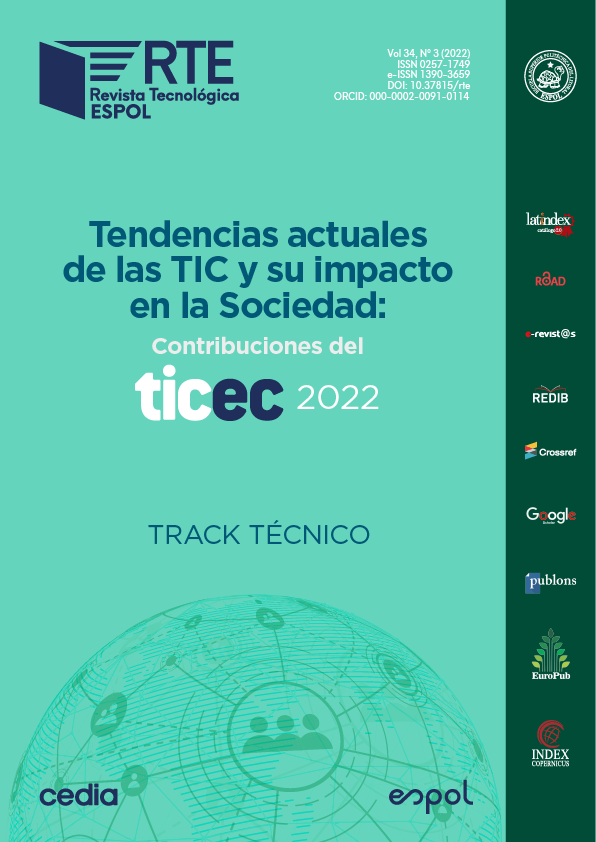The main objective of this project is the development of an Interactive Voice Response (IVR) system for the notification of operational data regarding process variables at the Boquerón
Plant, Petróleos de Venezuela S.A. (PDVSA), Monagas State. The IVR system that is in connection with the historical module of the Supervisory Control and Data Acquisition System (SCADA) Guardian of ALBA (GALBA) provides the user who requires it, the updated information in real-time of any of the process variables used in the plant. The study was of feasible project modality corresponding to field research and descriptive level, due to the fact that it seeks to solve a particular need. Four phases of the Capital Investment Project Guide (GGPIC) were used. The IVR system developed allows the acquisition of operational information from the Boquerón Plant (oil and gas production reports, oil and gas production trends) from any place and at any time, by any means the user prefers, either by email, SMS, or directly by voice, providing greater reliability of data for senior management executives, which allows speeding up the identification of failures and the decision-making process, and helps to maintain the continuity of operations at the Boquerón Plant.

This work is licensed under a Creative Commons Attribution-NonCommercial 4.0 International License.
References
Ahmed, A. (2011). VoIP Performance Management and Optimization. Estados Unidos: Cisco Systems, Inc.
Aguilera E. (2009). Diseño de la Instrumentación y Control de un Equipo Portátil para Pruebas de Producción de Pozos, en las Áreas del Furrial y Orocual Distrito Norte de Petróleos de Venezuela S.A. (PDVSA). Universidad de Oriente Núcleo Monagas.
Arias, F. (2016). El Proyecto de Investigación. (7ma). Caracas: Episteme.
Chan, D. (2015). Desarrollo del Sistema Integral Guardián del ALBA para la supervisión y control de la Planta Compresora Jusepín200 ubicada en el Hato Nuevo Limón de PDVSA – División Furrial. Trabajo presentado para optar al título de Ingeniero de Sistemas, Universidad de Oriente, Monagas, Venezuela.
Gómez, E. y Iza, G. (2010). Implementación de un IVR (Interactive Voice Response) utilizando un VoiceXML Browser [Tesis en línea]. Escuela Superior Politécnica del Litoral, Ecuador. Consultada el 10 de marzo de 2021 en: https://www.dspace.espol.edu.ec/bitstream/123456789/11606/2/Tesis-IVR-VXML.doc
Nuñez, L. (2018). Sistema IVR para la mejora de la gestión de cobranza de la empresa consorcio de tecnología e innovación S.A.C., Jaén 2017.
Ogata K. (2010). Ingeniería de Control Moderno. Quinta Edición. España. Editorial Prentice Hall.
Ortega, D. (2007). Diseño e implementación de un sistema interactivo de respuesta de voz (IVR) piloto para la reserva de boletos del ferrocarril Cuzco–Machu Pichu [Tesis en línea]. Pontificia Universidad Católica del Perú, Perú. Consultada el 02 de marzo de 2022 en: http://tesis.pucp.edu.pe/repositorio/bitstream/handle/123456789/203/ORTEGA_DAVID_DISENO_IMPLEMENTACION_SISTEMA_INTERACTIVO_RESPUESTA_VOZ.pdf?sequence=2
PDVSA. (1999). Guías de Gerencias para Proyectos de Inversión de Capital. Caracas: Autor. Documento mimeografiado.
Sánchez, R. (2012). Servicio de respuesta de voz iterativa para el Hospital Nacional Rosales [Tesis en línea]. Universidad de El Salvador, República de El Salvador. Consultada el 29 de enero de 2021 en: http://ri.ues.edu.sv/1722/1/TESIS.pdf
Sinchire, M. y Arévalo, G. (2013). Diseño e implementación de un prototipo de sistema IVR (Interactive Voice Response), utilizando ASTERISK, para la Universidad Politécnica Salesiana Quito-Campus Sur. http://dspace.ups.edu.ec/handle/123456789/5354
Universidad Pedagógica Experimental Libertador (2006). Manual de Trabajo de Grado de Especialización y Maestría y Tesis Doctorales. Caracas: FEDUPEL
Vergara, I. & García, S. (2017). Diseño de un sistema de respuesta de voz interactiva (IVR) redundante a través de la plataforma Genesys voice platform (GVP) en Emtelco S.A.. Recuperado de: http://hdl.handle.net/20.500.12622/4057.







